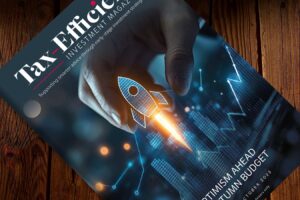Written by Angus MacNee, CEO, ValidPath
While much of the industry focus on AI in financial advice has centred around operational efficiency, Angus Macnee argues that the real opportunity lies in a more radical transformation. In this thought-provoking piece, he introduces the concept of “Best Path” advice — an AI-enabled, outcome-driven standard that challenges the relevance of restricted advice models and makes the case for why true independence will define the future of the profession
Many of the applications of artificial intelligence (AI) in financial advice has focused on short-term efficiency gains: faster onboarding, automated report generation, and more streamlined processes. And while these are undoubtedly useful developments, they only hint at AI’s true potential within the financial advice sector.
Why? Because there is a larger transformation underway than simply making an existing inefficient process more efficient. Elon Musk has frequently stated that a common mistake is to try to “optimise something that shouldn’t exist,” and at Rimbal – and our IFA network ValidPath – we have been exploring how AI can not only improve processes, but can make them obsolete entirely. This type of transformation is only now possible because of AI, as it is predicated on being able to achieve outputs from inputs without the necessity of workflows, user interfaces or human-intervention.
It is in this context at Rimbal and ValidPath that we have also been exploring how AI will transform the current standard for best practice financial advice, and why we believe this is a new paradigm – what we call “Best Path” advice.
The transition from a best practice to “Best Path” standard
We have, within the financial advice industry, historically aspired to achieve ‘best practice’. “Practice” derives from the Latin “practicare”, meaning “to perform or carry out,” and it emphasises action and application over theoretical knowledge alone. In an advice context, best practice implies the best attempt based on the knowledge, resources and experience of the adviser within the constraints of the advice framework itself (for example, it could be a restricted proposition with a ‘one size fits all’ offering). Like in a law practice or medical practice, “best practice” is often a valid aspiration, but the outcome is not always assured and it can fall short of delivering for certain clients.
The promise of AI, however, is to be able to provide a tailored and highly personalised solution for each client, and to be able to transition from a ”best practice” standard, that is largely process-driven, to an outcome-based standard. This distinction is profound, because it promises to deliver the ‘best’ solution to each client based on their personal circumstances, and the ability to determine the best solution for each client is the “Best Path”.
“Best Path” is the explicit best and optimal solution for a given user based on the information available. In contrast to best practice that is the best attempt for the given user (which of itself introduces inconsistences e.g. between different advisers or propositions, etc), “Best Path” follows the explicit best path from input to output, and the optimal solution for the given user.
“Best Path” and implications for financial advice models
The implications for a “Best Path” versus best practice standard are clear. Firstly, in its purest form, “Best Path” will mean a more tailored and personalised solution for each client, the optimisation of advice suitability, and therefore the optimisation of ensuring positive client outcomes (which will also reduce regulatory risk).
“Best Path” will also favour an independent advice model because the AI will need to access the entire range of providers and products to support a recommendation that is optimised to be in the client’s best interest. It follows, in an AI-driven future, the rationale that justifies why you would have a restricted proposition (other than because it’s your business model) vanishes. Why? Because historically, the main justifications for a restricted proposition were compliance, cost, and accessibility: compliance because a restricted proposition has more guardrails, cost because the integrations and compliance framework can be more manageable, and accessibility because the cost and compliance benefits support broader scalability.
However, AI will solve the compliance, cost, and accessibility (and any other) challenges. And, if you are seeking to support the client in their best interests, then you need more than whatever restricted proposition has been arranged; you need access to the full market only available from an independent financial advice framework.
Solving for “Best Path” financial advice
At its core, the advice process is deterministic. The financial product and financial regulatory universe is known. This means that with AI, in the future, we can ‘solve’ financial advice. Or put another way, for the given inputs and circumstances, we will be able to produce the outputs independent of the process or workflow. The mechanism and ‘magic’ to achieve the Best Path has transformative potential for the financial advice industry, and for financial services. It is for reasons like “Best Path” that I am excited about the future of financial advice.















